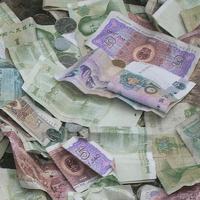BEIJING -- As policymakers from the world's two largest economies gather in Washington for the third U.S.-China Strategic and Economic Dialogue, the Chinese yuan is trading at a 30-year high against the dollar, while its convertibility has expanded significantly since this time last year, and bullish sentiment surrounds its future evolution.
Although this may suggest China is finally getting serious about rationalizing the value of the yuan, recent measures are geared toward internationalization rather than genuine liberalization, and China's economy is still decades away from being able to support a free-floating currency. It is in the U.S. interest to support Beijing in this transition, and this week's meeting is an opportunity to improve cooperation on the subject.
In the past 12 months, crossborder yuan flows have expanded rapidly. Beijing has allowed the currency to be used in international trade settlements for the first time, with transactions totaling more than RMB 360 billion ($45 billion) in the first quarter of this year. Last year, the first yuan-denominated bonds were issued in Hong Kong - the so-called dim sum bonds -- and last month saw the first yuan-denominated share offering on the Special Autonomous Region's exchange. Hong Kong is establishing itself as the center for international yuan trading and has quickly accrued the equivalent of RMB 400 billion ($55 billion) of reserves in the currency. Finally, institutional investors have been granted an unprecedented range of mechanisms for moving yuan into and out of the country. With further policy measures in the pipeline, these new crossborder yuan flows look set to continue their rapid expansion in the next five years.

